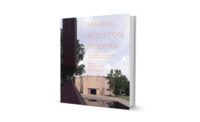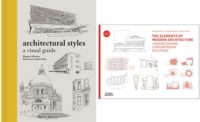There has always been something strange about the enduring popularity of architecture erected during the 21-year period of fascist rule in Italy. This is particularly true for Rationalism, the Italian variant of the Modern movement. The architects who enthusiastically worked on behalf of the regime include many of the most important Italian designers of the last century, among them Gio Ponti, Marcello Piacentini, Angiolo Mazzoni, Luigi Moretti, Adalberto Libera, Ignazio Gardella, Pier Luigi Nervi, and, above all, Giuseppe Terragni, who produced the iconic work of Italian Rationalism, the Casa del Fascio in Como.
The appreciation for fascist-era Italian architecture is even more pronounced in the countries colonized and occupied during the 1930s and ’40s. Preservation movements in Eritrea, Ethiopia, Somalia, and Albania actively seek to safeguard the heritage of architecture built by Italian colonial authorities. In Eritrea, the country’s president committed substantial state resources to the successful effort to inscribe the Italian-built center of the capital, Asmara, on the UNESCO World Heritage List.
In their recently published volume, The Routledge Companion to Italian Fascist Architecture, editors Kay Bea Jones and Stephanie Pilat have collected more than three dozen essays that discuss fascist-era architecture and its reception. Ranging in scope from articles about individual buildings and urban districts to typologies, materials, and the later careers of specific architects, the book examines the diverse legacies of buildings, cities, landscapes, and discourses from the period. As Jones and Pilat explain in their introduction, “The Afterlives of Fascism,” scholarly analysis of the post-war reception of the period is characterized by its diversity, not its unity. The resulting breadth of historiographic interpretation presented here reflects what they call the “cacophony” of voices, which is explained in the seven essays introducing the book’s many thematic sections.
Jones and Pilat are accomplished authors who’ve contributed significantly to our understanding of the continuities and disruptions in Italian Modernism during and after the fascist period. Jones’s Suspending Modernity: The Architecture of Franco Albini (2014) examined a figure who embodies the contradictions of architects who rebuilt the country after the war, despite practicing under Mussolini. Pilat’s award-winning Reconstructing Italy: The Ina-Casa Neighborhoods of the Postwar Era (2014), is a model of historical scholarship on the relationships between architecture and urban design, and state and corporate patronage.
The book presents important new research by a number of leading scholars of fascist-era architecture. Mia Fuller expands on her groundbreaking work on urban design with an essay on civic identity in the new settlements of the Pontine Marshes, south of Rome; Brian McLaren adds to his research on Italian colonialism with a chapter on the theoretical writings of designer Carlo Enrico Rava; Flavia Marcello contributes a detailed analysis of Milan’s poignant Monument to the Fallen in Concentration Camps; Sean Anderson builds on his work on Eritrea with a study of the Somali capital, Mogadishu; Paolo Nicoloso revisits the urban interventions of Marcello Piacentini and offers new insights into the oft-overlooked Piazza della Vittoria in Brescia; and Jeffrey Schnapp discusses his work with a team of scholars to install an extraordinary historical display inside the plinth of Piacentini’s Monument to Victory in Bolzano.
Also included are several excellent essays by younger scholars; Matthew Scarlett examines the complex political context of Asmara’s preservation, and Francesco Cianfarani offers a richly researched chapter on social housing in the suburbs of Rome, one of his three entries.
The book is a welcome English-language addition to the literature on the design of the built environment during the fascist period in Italy.





Post a comment to this article
Report Abusive Comment